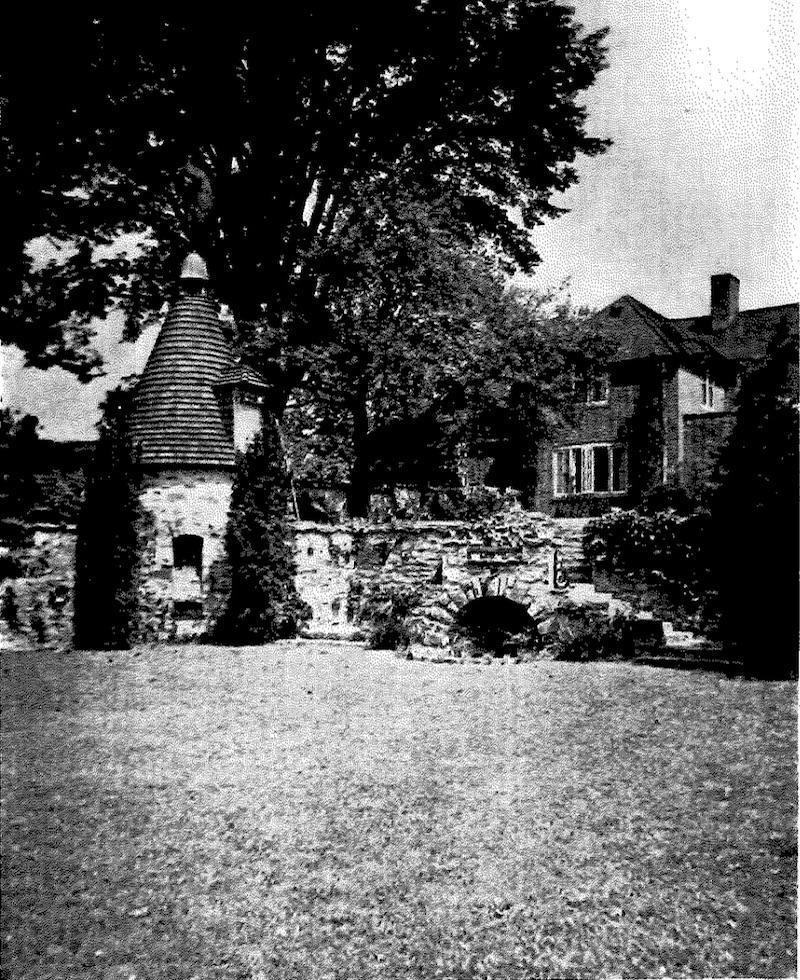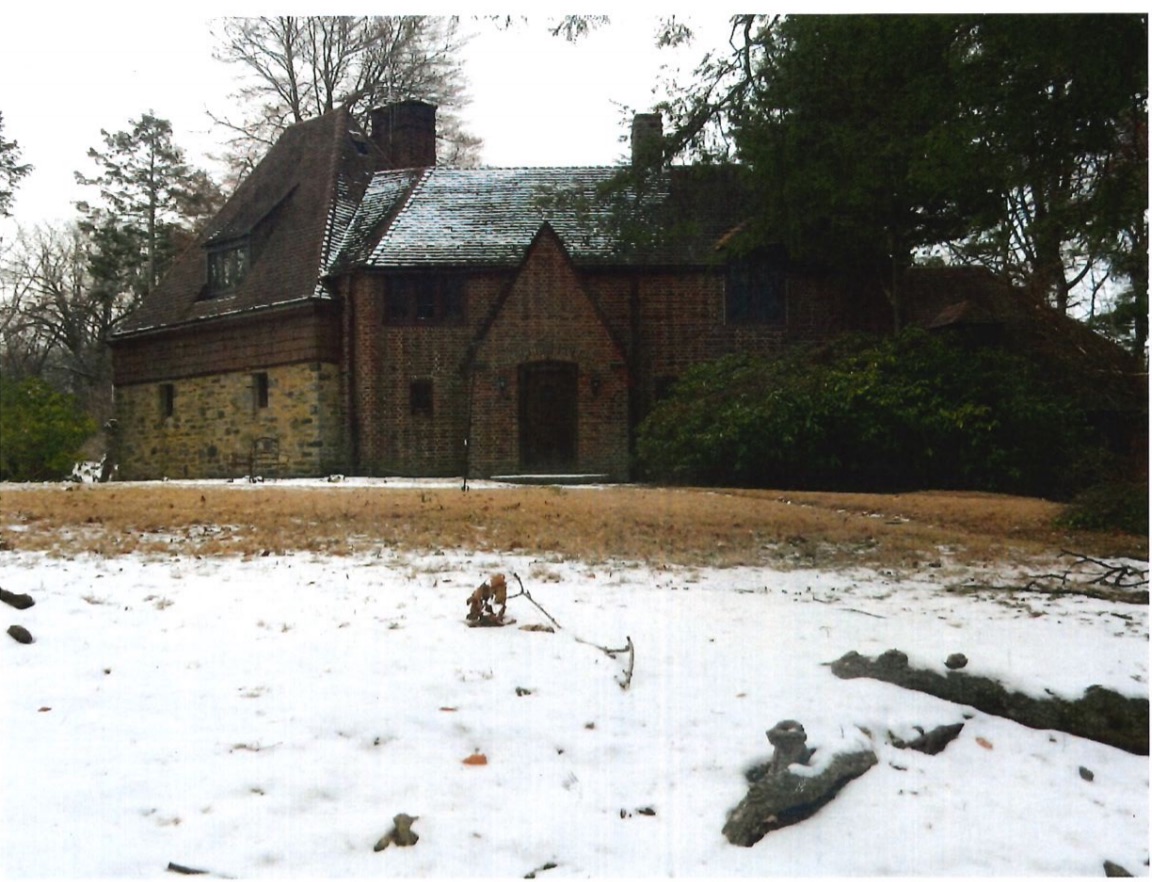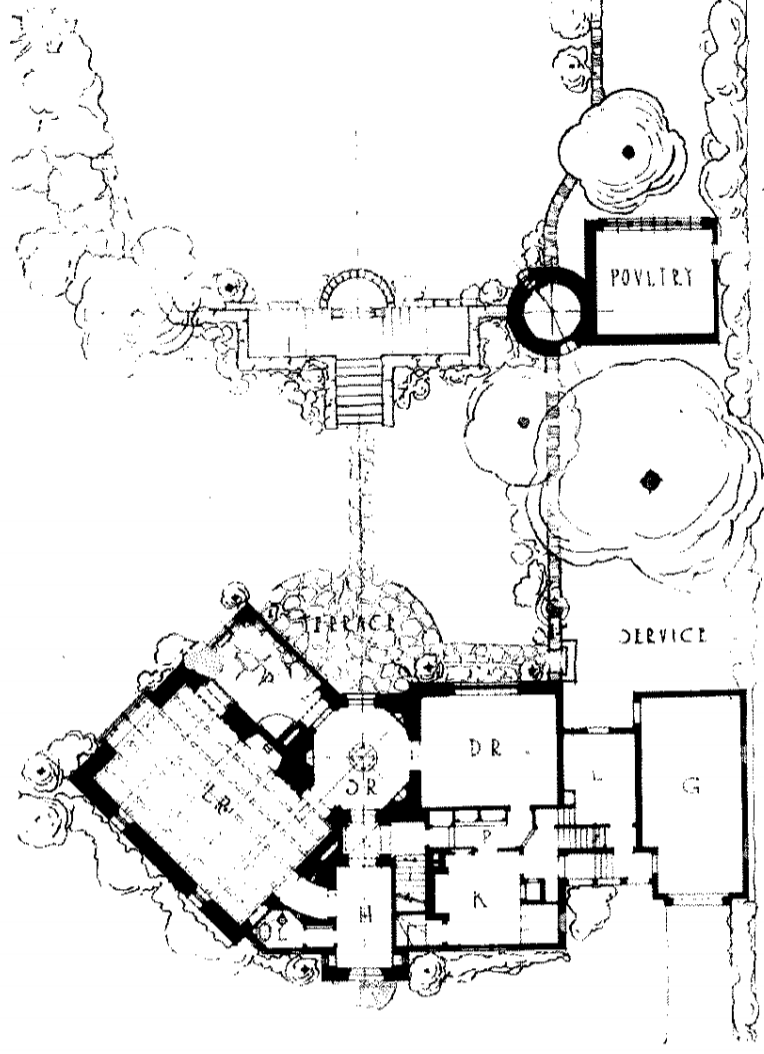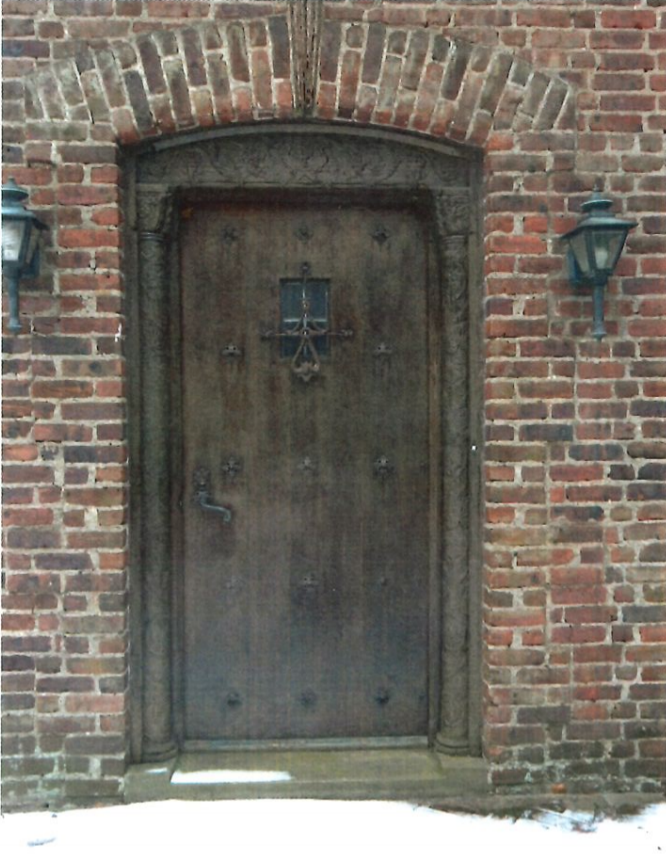Village Board Weighs Fate of Historic Home at 6 Fenimore Road
- Thursday, 07 June 2018 11:37
- Last Updated: Wednesday, 25 July 2018 08:31
- Published: Thursday, 07 June 2018 11:37
- Hits: 10670
 A View of the Rear from 1923Tensions ran high at Scarsdale Village Hall on Tuesday, June 5th at a hearing on the decision to permit demolition of a home at 6 Fenimore Road. The house, built in 1921, was designed by the architect Andrew J. Thomas, who is well known for work for the Rockefellers, for the design of Forest Park in Ohio and of the first garden apartments in New York. Thomas also built the adjacent property at 8 Fenimore Rd, once owned by comedian Al Jolsen.
A View of the Rear from 1923Tensions ran high at Scarsdale Village Hall on Tuesday, June 5th at a hearing on the decision to permit demolition of a home at 6 Fenimore Road. The house, built in 1921, was designed by the architect Andrew J. Thomas, who is well known for work for the Rockefellers, for the design of Forest Park in Ohio and of the first garden apartments in New York. Thomas also built the adjacent property at 8 Fenimore Rd, once owned by comedian Al Jolsen.
The house, a cottage and greenhouse were designed by Thomas and built in 1924 for his own use. A rear addition was made in 1947. In 1950, the greenhouse was demolished and replaced with a detached garage. Thomas initially owned and lived on the property, but it was later sold to the Manny family who owned it from 1937 through 2017, when it was sold to TAK developers, who plan to tear down the existing buildings, subdivide the 1.3 acre lot and construct two new houses.
On November 21st, the Committee for Historical Preservation (CHP) ruled that the house should be preserved because there was sufficient evidence to determine historical importance. In order for a building to be considered worthy of preservation it must meet one of the four criteria dictated in the village code. The committee believed it met the third criteria, which states “That the building is the work of a master and embodies the distinctive characteristics of a type, period or method of construction that possess high artistic values”. The owners of the property have chosen to appeal this decision, and a hearing was held to determine if the property met the third or any other criteria.
The property owners hired multiple lawyers to bring forth their case, and the village brought in Architecture Professor Andrew S. Dolkhart of Columbia Universtiy who is an expert in architectural history to study 6 Fenimore Road and offer an opinion on its merits for preservation. In the report he sent to the village, he argued that the property should be saved because it meets both the first and third criteria for preservation in Scarsdale. The first criteria states that “That the building is associated with events that have made a significant contribution to broad patterns of Village, regional, state or national history.” Dolkhart believes the first criteria is met because “the house is an important example of the suburban architecture of the 1920s that is the key development in Scarsdale’s history as a residential community, and it was the home of a very prominent architect”. He also believes the third criteria is met because 6 Fenimore “was designed by Andrew J. Thomas, a well-respected and very talented architect who was definitely a master designer. The building is also an excellent example of French Norman architecture, with high artistic values, including the use of materials, massing, and detail on the main house and outbuilding and in the adjoining landscape”. The Front of the House Today
The Front of the House Today
The lawyers representing the property owners hired Dr. George Thomas (unrelated to Andrew Thomas), an architectural expert, to dispute the claim that the property met the third or any other criteria for preservation. Dr. Thomas is a partner at Civic Visions LP, a Philadelphia based firm that does drafting, architectural design, and more. He also has taught architecture at the University of Pennsylvania and co-founded the University of Pennsylvania Historical Preservation Program. Dr. Thomas began by attacking the legacy of Andrew Thomas seeking to dispel the notion that Thomas was a master. He noted that Thomas was not traditionally educated, and lacked the necessary design skills to be considered a master. He proceeded to make even more damning assumptions, stating that the graduate students who worked for him probably designed the house anyway, while at the same admitting to having no basis to support that claim. He claimed that Andrew’s architectural specialty was the building of garden apartments, not suburban homes, concluding that this house was not the work of a master. It should be noted, however, that Andrew Thomas also developed residential homes in Forest Hill, Ohio, 81 of which are on the National Registry of Historic Places.
Dr. George Thomas proceeded to attack the second part of the third criteria for becoming a landmark: the embodiment of a distinctive characteristic of a type of construction that possess high artistic value. Dr. Thomas called the house a “impoverished version of Norman Revival” and claimed it lacked necessary details including a rounded or towered entrance or turret. He called the house a hodge podge of styles and asserted it lacked the necessary detail to be considered distinctive. Dr. Thomas also noted that the house was left out of the 2012 Reconnaissance Level Cultural Resource Survey, written in part by Dolkhart, which looked at buildings or areas of cultural/historical significance in Scarsdale. The report can be viewed by clicking here.
 The Original Floor Plan from 1923Dr. Thomas also responded to the claim that the house can be preserved under the first criteria. He noted that the house was merely a reflection of suburbanization, and ruling for preservation under this criteria would set a dangerous precedent of allowing any house built in that era to be deemed a historical place.
The Original Floor Plan from 1923Dr. Thomas also responded to the claim that the house can be preserved under the first criteria. He noted that the house was merely a reflection of suburbanization, and ruling for preservation under this criteria would set a dangerous precedent of allowing any house built in that era to be deemed a historical place.
After Dr. Thomas spoke, Terry Rice, an attorney retained by the village, noted that the term “master” is not defined by the village, and asserted that it could be interpreted loosely as someone who is skilled in a particular area. Professor Dolkhart then gave a brief rebuttal to the issues raised by Geroge Thomas.
Dolkhart stated that lacking formal education cannot be interpreted as a detriment to becoming a master as many great architects of the time didn’t receive formal training. According to Dolkhart, since Andrew Thomas built the house for himself, it reflected his personal vision of architecture, and contained architectural details from different time periods to add a level of sophistication and nuance to the house. The house also represented his experimentation of multiple suburban design techniques, as its construction took place during a pivotal time period for the development of Scarsdale as a suburb. Dolkhart also noted that the house was likely left out of the Scarsdale 2012 Cultural Reconnaissance Survey, produced by his firm, because it was listed as being located in Hartsdale.
Another attorney representing the owners of the property spoke in an attempt to dispel the notion that Andrew Thomas is a master. He argued that the national historic preservation law, upon which the Scarsdale’s guidelines are based, states that in order to for something to be “the work of a master,” the work must take into account the standard style of the architect. Since Thomas was best known for his garden apartments, this assumption would invalidate the rationale for preservation under the third criteria. But Mayor Hochvert pointed out, the Scarsdale code is not identical to the national code, and that assumption cannot be made. Furthermore, under a general definition, a master must be generally recognized in a field, not in the regard to a specific work, so if an architect who typically worked in one style masterfully crafted a house that embodied a different architectural style, it still merits consideration for historic preservation. A Detail on the Door
A Detail on the Door
One community member was outraged by the owner’s attempt to destroy the historic house. Lika Levi of Save-Scarsdale.org urged the village to preserve this houses, stating “You have to institute a moratorium and put an end to this mindless destruction. It is the indigenous Isis and yet, Board after Board nothing is being done. Scarsdale is losing its character, its very identity, heritage, its everything. A town without these character houses, without the leafy trees is not Scarsdale any more. I do not want to hear of any more hearings or CHP meetings. Nothing deserves to be demolished.”.
The Village Trustees gave both sides three weeks to submit any additional information to the board. Their reports must be submitted simultaneously. Two to three weeks after their submission, the board will come to a final decision on the fate of 6 Fenimore Road.












